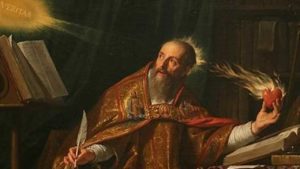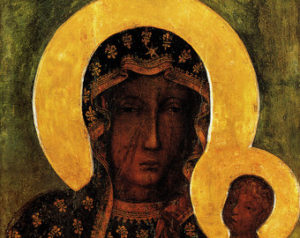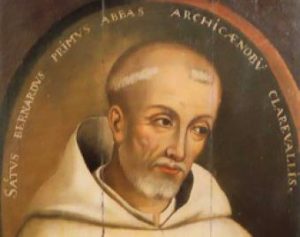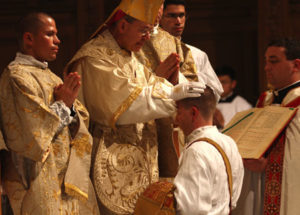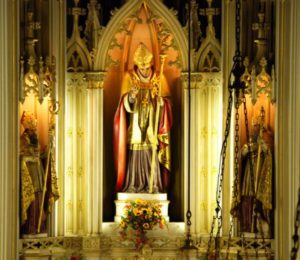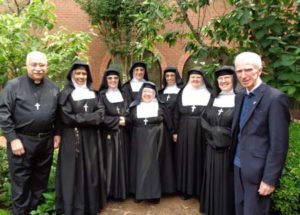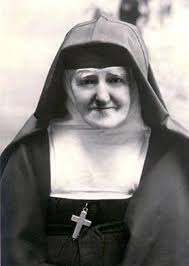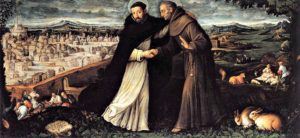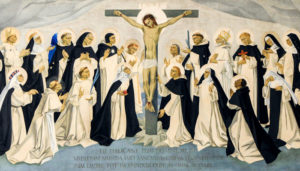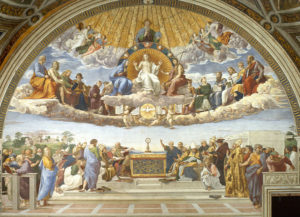The Right to Pursuit of Holiness
―by a Poor Clare Nun, Palos Park, IL
“Religious profession so orders our whole life to God and neighbor that it is a sign the unity of the Trinity reflected in our unity and our outpouring love for God, our sisters and all mankind. It is this loving kenosis which produces perfect human fulfillment.”
—Constitutions for Poor Clare nuns (Article 5, number 3)

St. Thomas Aquinas asserted that happiness is union with the One who is Goodness itself, namely God. Our country’s forefathers saw the human desire for happiness as not just a goal but a fundamental right, the “right to the pursuit of happiness.” However, pleasure and happiness are not the same and the “right to the pursuit of happiness” presupposes the moral obligation to live according to the laws of God. Indeed, the Catholic Church proclaims that we were created to know, love and serve God in this life so as to be happy with Him forever in the next.
This happiness or blessedness is ultimately holiness. Therefore, we can say we have been endowed by our Creator with the “right to pursuit of holiness.” This pursuit of holiness, or striving for perfection, is the life’s work and obligation of those who make profession of the evangelical counsels. We do this by daily offering our lives at the service of God’s plan in the vows of obedience, poverty and chastity, emptying ourselves in order to be filled with Christ and bring him to others. “It is this loving kenosis which produces perfect human fulfillment.”
Obedience
Obedience is an act of the will, a free choice, not an act of fear or compulsion. “The love of Christ impels us,” St. Paul says, and it is through this love that any fear is transformed into the free surrender of our will and the great desire to do what God is asking of me at this moment. In his conferences on the evangelical counsels, Archbishop Charles Schleck, C.S.C. asserts that “obedience perfects the will instead of suppressing it. To love God is not merely to surrender or give up something of our own will. It is to adhere positively and firmly to the will of the one we love. And to love God means to do what He desires; it is obey. Obedience is universal in character and belongs to the very life of the Church. It brings to completion our baptismal faith … (it) perfects the consecration proper to baptism.”
Chastity
In her biography of Saint Colette, Mother Mary Francis, P.C.C., describes the young Colette, with the vow of perpetual virginity fresh upon her soul, as a woman no longer alone in the world. She is espoused to Christ now. Yet this reality is hidden from the eyes of men and is part of the great paradox of Christian life where the one who loses her life finds it and the grain of wheat that dies brings forth much fruit. It is our radical renunciation of all things, even the great good of earthly marriage, for the sake of the Kingdom of Heaven which is the source of our union with Christ. And it is our union with Christ which allows us to enter into His love for all mankind.
Poverty
In a radical kenosis the second person of the Blessed Trinity became man to save us by His death and resurrection. In the words of St. Paul “… He did not deem equality with God something to be grasped at but emptied Himself.” Our form of life is to live the holy 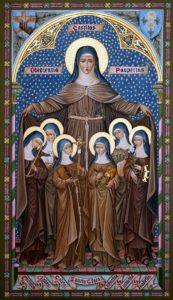 Gospel, and we do this by striving to imitate the self-emptying of Christ in every aspect of our life. “According to the thinking of St. Clare, evangelical poverty goes far beyond the renunciation of earthly possessions, extending to the whole of life. For in the Franciscan concept, the surrender of temporal goods is intimately bound up with the profession of obedience and chastity and also with enclosure and communion in the spirit” (Art. 11 #1).
Gospel, and we do this by striving to imitate the self-emptying of Christ in every aspect of our life. “According to the thinking of St. Clare, evangelical poverty goes far beyond the renunciation of earthly possessions, extending to the whole of life. For in the Franciscan concept, the surrender of temporal goods is intimately bound up with the profession of obedience and chastity and also with enclosure and communion in the spirit” (Art. 11 #1).
“Enclosed nuns are called to give clear witness that man belongs entirely to God, and so to keep green among the human family the desire for a heavenly home” (Art. 20 #2). We strive for that union in this life and are a sign for the world of each soul’s destiny.
For those who are called and who respond to its totality of grace, ours is a life of profound joy in the pursuit of holiness through the total surrender of all we are and all that is, for God’s glory and the salvation of souls. “Amen, amen, without ever turning back” (Testament of our Holy Mother St. Colette)
